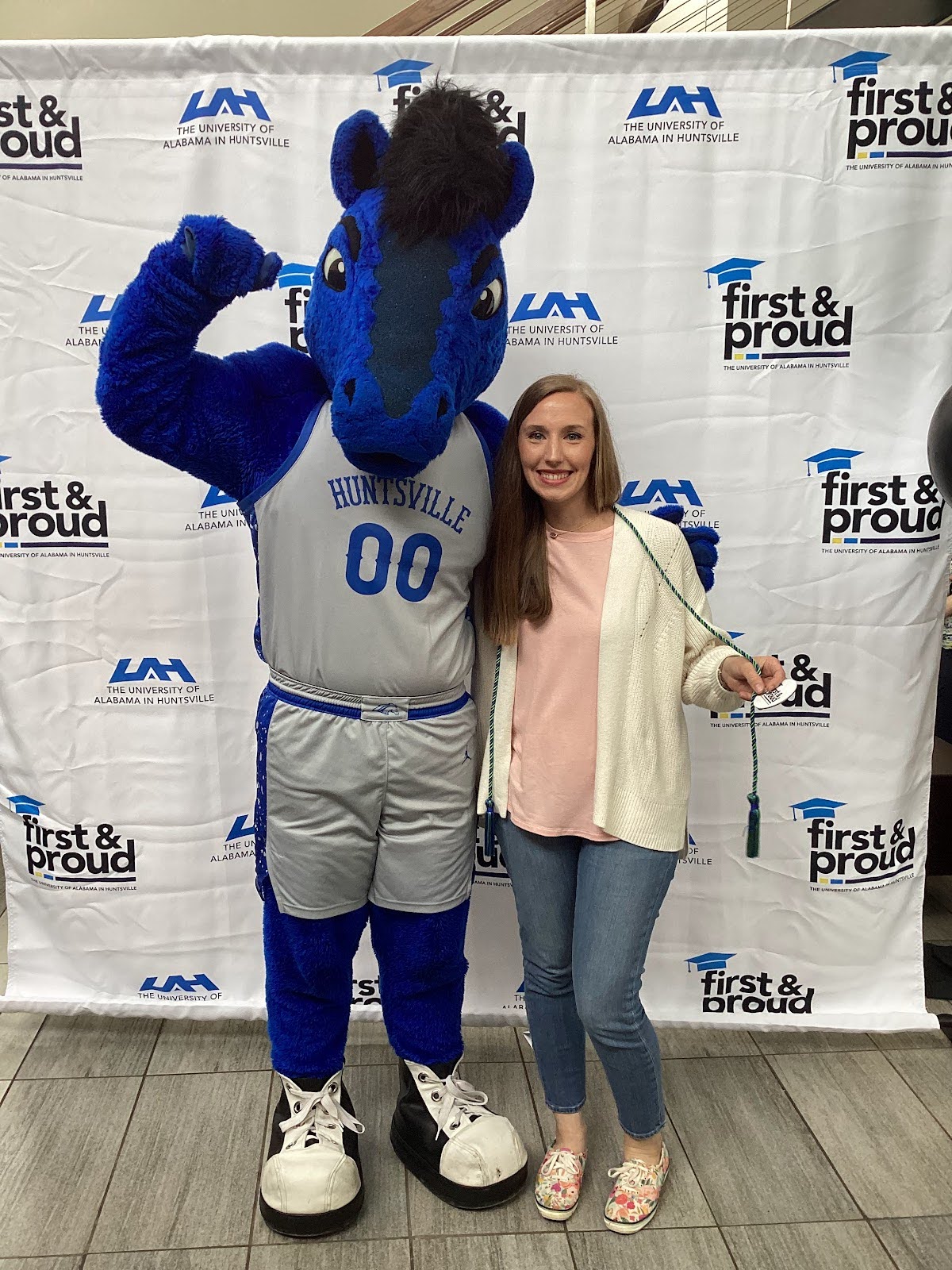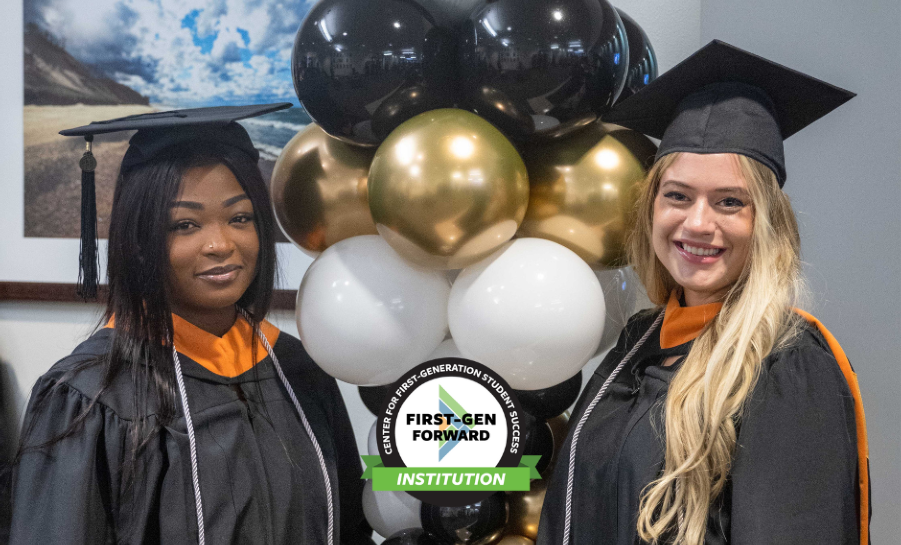Supporting First-Generation Student Success at The University of Alabama in Huntsville
Karessa Acosta Lee, Leigh Remy, University of Alabama in Huntsville / FirstGen Forward / December 02, 2024

At The University of Alabama in Huntsville (UAH), 1 in 5 undergraduates were first-gen students this fall. Our location within the nation’s second-largest research park and Alabama’s largest and fastest-growing metropolitan area appeals to career-focused students and families who embrace internship, co-op, and undergraduate research opportunities and a strong regional job-market, particularly in STEM fields. UAH is also 55 years young, and as we have grown from our founding as a training ground for engineers and scientists drawn by NASA’s Marshall Space Flight Center to a comprehensive university, our understanding of who we serve and how best to support them hasn’t always evolved as quickly as our student population.
Beginning in 2021, we started on a path to understand our first-gen community, determine their needs and wants, and build buy-in across campus for new ways to recognize and serve these students. Goodwill and good data were our starting points. In a short time, we’ve made significant strides to better understand, support, and celebrate our growing first-generation student population. From launching a student organization, developing a first-gen website, and endowing scholarships through alumni giving, our efforts are making a difference. A network of faculty, staff, and students, established as part of our membership in First Gen Forward, will set our sights even higher. We hope these lessons and ideas are useful for other institutions working to build support from the ground up.
When you’re a first-gen student, it isn’t obvious if you are alone in that experience or one of many.
Build Your Foundation - Start with Data and Embrace Goodwill as a Resource
When UAH launched an academic advocacy/coaching program in 2021, two curious colleagues asked if the program would serve first-gen students. Following that initial conversation, it became clear that UAH had yet to develop a shared definition of being first-generation. We didn’t know how many students would meet such a definition and thus had no way to gauge experiences or success. Given lean resources, enrollment management leaders had been working from the premise that a universal approach to student support served all students equitably.
As the Academic Success Advocacy Program (ASAP) took shape, we combed ten years of student data to build a predictive model of retention and graduation. Our choice to define a first-generation student as someone whose parents (or guardians) had yet to earn a bachelor’s degree was pragmatic. The Office of Admissions had FAFSA information about parent’s educational levels, giving us a starting point for identifying this population. (We have since supplemented the FAFSA with other ways students can self-identify). The six-year graduation rate for first-time, full-time students over five years showed that one-size support did not fit all students. First-generation students had a graduation rate 11 percentage points lower than their peers.
With that finding in hand, we had a solid case to serve students in new ways.

The second choice was to take action using existing resources. Offices contributed according to their ability and expertise. Alumni Affairs surveyed local alumni, published a video profile of a first-gen graduate, and partnered with Career Services on a first-gen-focused career panel. Career Services revised applications for existing mentoring and externship programs so that students could request a first-gen graduate as a mentor. ASAP offered coaching and nurtured the development of a student organization. Development worked on endowing two scholarships. Not all efforts have succeeded, but momentum grew, starting with a logo, shared and manageable commitments, and an initial goal of raising awareness.
Representation Matters
When you’re a first-gen student, it isn’t obvious if you are alone in that experience or one of many. You don’t know if your professors might relate or what alumni have gone on to achieve. Visual representation of our community and the university’s support would matter. Students suggested backpack buttons and laptop stickers as a first step to building pride and community. We distributed those during new student and faculty orientation and made them available in offices across campus. Interviews with first-gen students, faculty, and staff became Instagram profiles and a gallery wall. University writers began asking if someone was a first-gen graduate and including that detail in their regularly published stories. The message throughout has been pride, strength, potential, and celebration.
One of our best-received efforts was the approval of an honor cord worn by undergraduates at commencement. They are a gift from the University, accompanied by a congratulations card signed by the student’s college dean. We also provide thank-you notes for students to share with their families and others celebrating this achievement.
Starting this fall, first-gen families were invited to meet fellow students, faculty, and staff over coffee as they arrived for Orientation. Volunteers from every corner of campus showed up throughout the hot Alabama summer to make a personal connection and extend a welcome.
Partner with Students

Our journey at UAH demonstrates that building support for first-generation students doesn’t require a mention in a strategic plan or significant initial resources. Instead, success can grow from a foundation of good data, collaborative partnerships, and student voice and leadership. Through distributed efforts tapping into existing expertise and office missions, we’ve seen how the cumulative effect of smaller steps – from backpack buttons to scholarship fundraising, from student-led meetings to campus-wide celebrations — can create meaningful change. Our campus network and what we are learning from others in our First Gen Forward class are bringing new ideas and energy to this work. We’re proud of the progress we’ve made in building a community where first-generation students see themselves represented, celebrated, and positioned for success. For other institutions beginning their journey, we hope our experience shows what is possible when you use what you have, start from wherever you are (just start!), and keep students at the center of our work.





